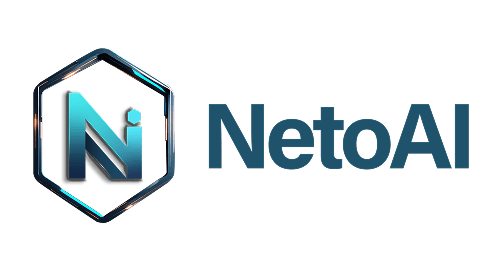You need to agree to share your contact information to access this model
This repository is publicly accessible, but you have to accept the conditions to access its files and content.
Please provide answers to the below questions to gain access to the model
Log in or Sign Up to review the conditions and access this model content.

tslam/g3 is a telecommunications domain-specialized language model developed by NetoAI, fine-tuned from Google's Gemma-3 27B. The model demonstrates exceptional performance across various telecom-specific tasks, providing deep domain expertise for telecommunications applications.
Model Details
Model Description
tslam/g3 is a 27-billion parameter language model fine-tuned specifically for telecommunications industry applications. Built upon the Gemma-3 27B foundation model, it has been trained on extensive telecom-specific datasets to deliver accurate, contextually relevant responses for telecommunications protocols, network operations, and technical workflows.
- Developed by: NetoAI
- Model type: Large Language Model (Fine-tuned Causal LM)
- Language(s): English (primary), with multilingual capabilities inherited from Gemma-3
- License: Subject to Gemma model license terms. For commercial usage, contact NetoAI at [email protected]
- Finetuned from model: Gemma-3 27B
- Parameters: 27 billion
Model Sources
- Repository: https://huggingface.co/tslam/g3
- Base Model: Gemma-3 27B (Google)
- Developer: NetoAI
- Contact: [email protected]
Uses
Direct Use
tslam/g3 excels at telecommunications domain tasks including:
- Network Troubleshooting & Diagnostics: Analyzing network issues and providing resolution guidance
- Protocol Understanding: Expert knowledge of 3GPP, IETF, ITU, and IEEE telecommunications standards
- Configuration Generation: Creating and validating network configurations (BGP, OSPF, QoS, etc.)
- Technical Documentation: Understanding and generating telecommunications technical documentation
- Customer Support: Providing expert-level responses to telecom technical queries
- RF Network Planning: Supporting radio frequency network design and optimization
- Compliance & Standards: Interpreting regulatory requirements and industry standards
Downstream Use
The model can be integrated into:
- Telecommunications customer support chatbots and virtual assistants
- Network Operations Center (NOC) automation systems
- Technical documentation generation and summarization tools
- Network configuration and validation platforms
- Training and educational systems for telecom professionals
- Automated fault detection and resolution systems
- Capacity planning and network optimization tools
Bias, Risks, and Limitations
- Domain Specialization: Performance is optimized for telecommunications; general knowledge may be less comprehensive than general-purpose models
- Temporal Limitations: Knowledge reflects training data and may not include the latest telecommunications standards or technologies
- Geographic/Regional Variations: May have varying performance across different regional telecom standards and practices
- Technical Complexity: Outputs require validation by qualified telecom professionals for production deployment
- Training Data Bias: May reflect biases present in telecommunications industry documentation and datasets
How to Get Started with the Model
from transformers import AutoTokenizer, AutoModelForCausalLM
import torch
# Model setup
model_name = "tslam/g3"
tokenizer = AutoTokenizer.from_pretrained(model_name)
model = AutoModelForCausalLM.from_pretrained(
model_name,
torch_dtype=torch.bfloat16,
device_map="auto"
)
# Example: Telecom technical query
prompt = "Explain the 5G handover process and key signaling procedures."
messages = [
{"role": "system", "content": "You are an expert telecommunications assistant."},
{"role": "user", "content": prompt}
]
# Apply chat template
input_text = tokenizer.apply_chat_template(messages, tokenize=False, add_generation_prompt=True)
inputs = tokenizer(input_text, return_tensors="pt").to(model.device)
# Generate response
outputs = model.generate(
**inputs,
max_new_tokens=512,
do_sample=True,
temperature=0.7,
top_p=0.9
)
# Decode response
response = tokenizer.decode(outputs[0][len(inputs.input_ids[0]):], skip_special_tokens=True)
print(response)
Training Details
Training Data
tslam/g3 was fine-tuned on comprehensive telecommunications domain datasets, including:
- Standards Documentation: 3GPP specifications, IETF RFCs, ITU recommendations, IEEE standards
- Technical Manuals: Network equipment documentation, configuration guides, best practices
- Operational Data: Network logs, troubleshooting procedures, maintenance documentation
- Protocol Specifications: Detailed telecommunications protocol documentation
- Industry Publications: Whitepapers, technical reports, and telecommunications research
- Customer Interaction Data: Technical support dialogues and Q&A datasets
Training Procedure
The model underwent supervised fine-tuning on telecom-specific data to adapt the Gemma-3 27B base model for telecommunications domain expertise.
Preprocessing
- Domain-specific data cleaning and filtering
- Standardization of telecommunications terminology
- Quality assurance for technical accuracy
- Balancing across different telecom sub-domains
Environmental Impact
Carbon emissions for the fine-tuning process:
- Hardware Type: High-performance GPU infrastructure
- Base Model: Gemma-3 27B (pre-trained by Google)
- Fine-tuning Compute: [Specific details available from NetoAI]
- Carbon Emissions: Can be estimated using the Machine Learning Impact calculator
Technical Specifications
Model Architecture and Objective
- Architecture: Transformer-based, inherited from Gemma-3 27B
- Parameters: 27 billion
- Context Length: Supports extended context (specific length based on Gemma-3 specifications)
- Objective: Causal language modeling fine-tuned for telecommunications domain expertise
- Training Paradigm: Supervised fine-tuning on domain-specific corpus
Citation
BibTeX:
@misc{tslam-g3-2024,
title={tslam/g3: A Telecommunications-Specialized Language Model},
author={NetoAI},
year={2024},
publisher={Hugging Face},
howpublished={https://huggingface.co/tslam/g3}
}
APA:
NetoAI. (2024). tslam/g3: A telecommunications-specialized language model. Hugging Face. https://huggingface.co/tslam/g3
Glossary
- 3GPP: 3rd Generation Partnership Project - standards organization for mobile telecommunications
- IETF: Internet Engineering Task Force - standards organization for internet protocols
- ITU: International Telecommunication Union - UN specialized agency for telecommunications
- BGP: Border Gateway Protocol - routing protocol for the internet
- OSPF: Open Shortest Path First - interior gateway routing protocol
- QoS: Quality of Service - network resource management mechanism
- RF: Radio Frequency - wireless communication spectrum
- NOC: Network Operations Center - centralized location for network monitoring and management
- Fine-tuning: Process of adapting a pre-trained model to specific domains or tasks
More Information
For additional information, commercial licensing, or enterprise support:
- Website: NetoAI
- Contact: [email protected]
- Model Repository: https://huggingface.co/tslam/g3
Model Card Authors
NetoAI Team
Model Card Contact
For questions, feedback, or access requests regarding tslam/g3, please contact:
Email: [email protected] Model Repository: https://huggingface.co/tslam/g3
- Downloads last month
- 20